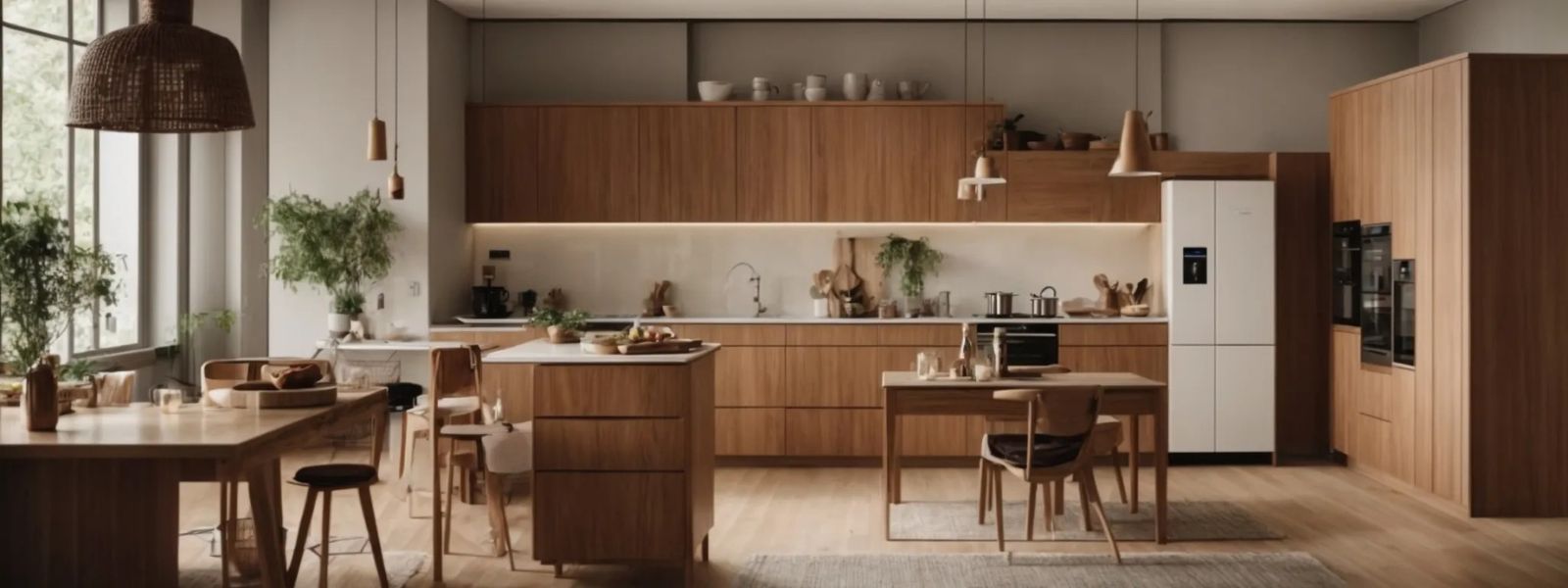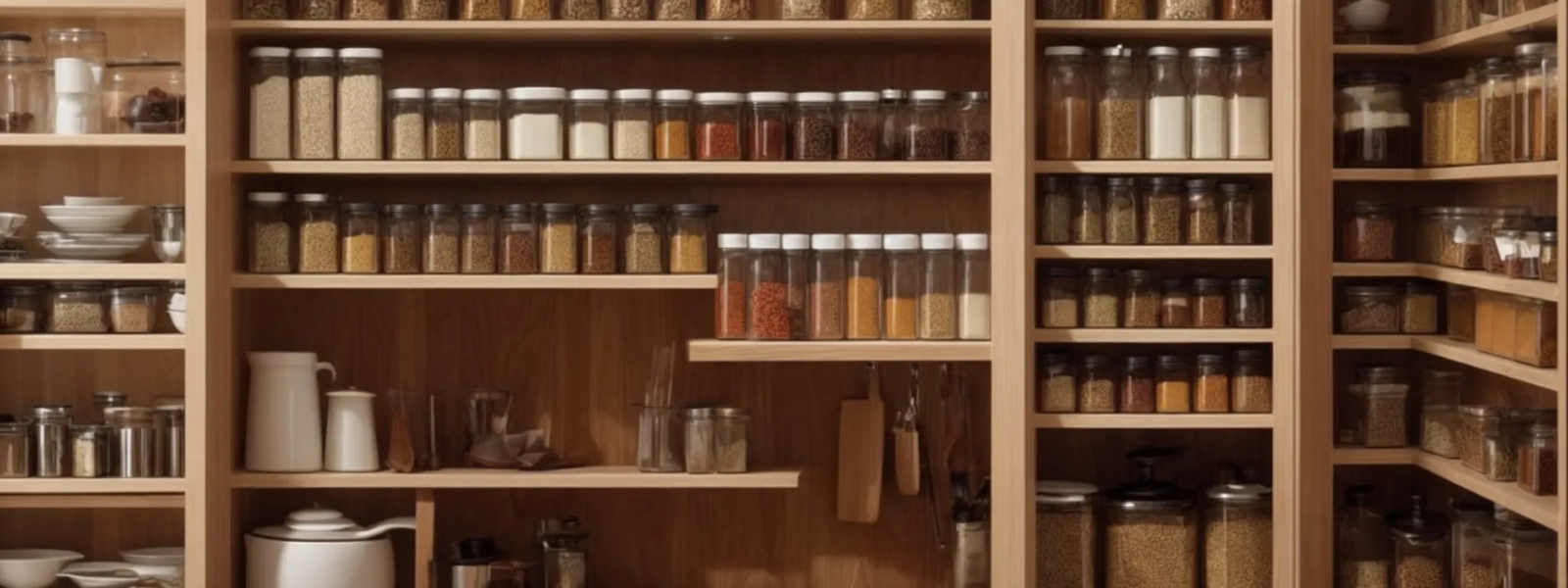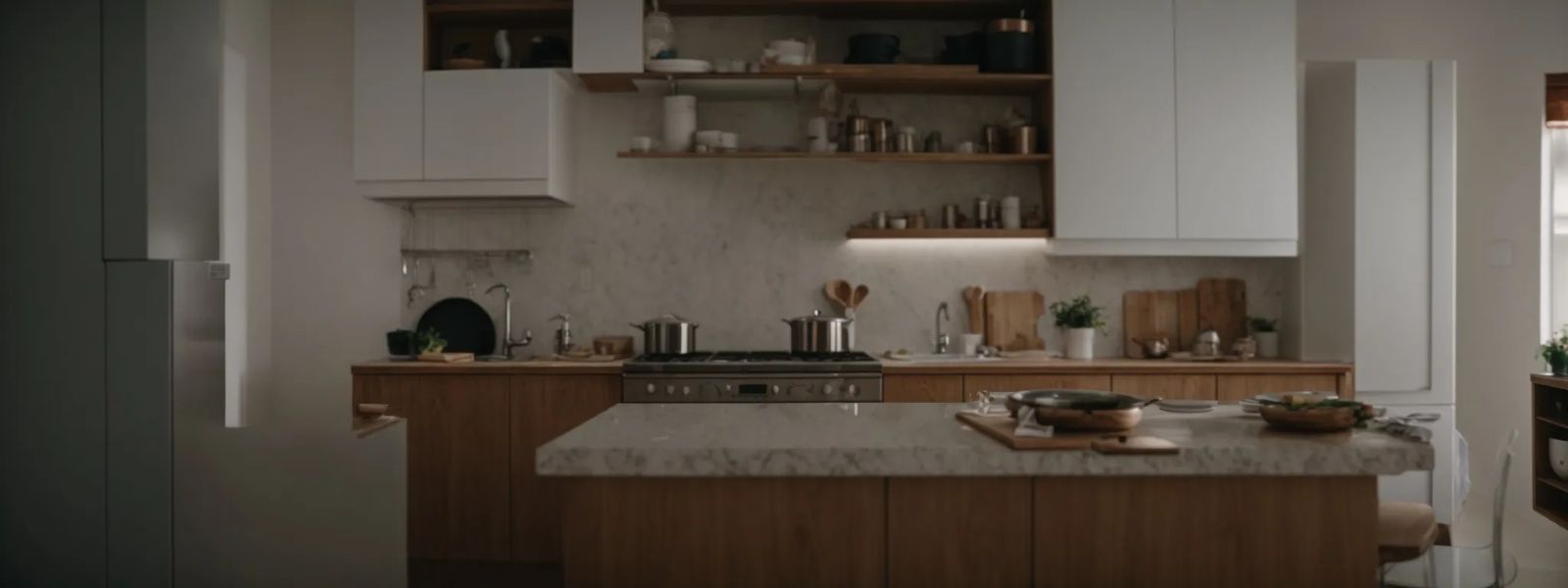Why Are Kitchen Cabinets So Expensive - Pricing Explained
link desc

Closets and kitchen cabinets differ primarily in their design, function, and maintenance. Kitchen cabinets are designed for storing food and cooking utensils, requiring durable materials like hardwoods and laminates to withstand moisture and heat. They need professional installation and regular cleaning due to exposure to cooking by-products. Closets, tailored for clothing and personal items, offer more material flexibility and customization options. They are often DIY-friendly with modular designs and require less frequent cleaning but may need regular decluttering to maintain organization.
Navigating home storage solutions often leads to a crossroads - deciding between updating kitchen cabinets and closets.
Each serves a unique purpose, shaped by its design, material, and location within your Alabama home.
While kitchen cabinets excel in accessibility and functionality, closets offer a broader range of customization for personal storage.
Delving deeper, the intricacies of their differences reveal a fascinating blend of art and practicality.
Keep reading to uncover how these storage solutions, though similar at a glance, fulfill distinct roles in organizing our living spaces.
Cabinet vs closet differences come down to purpose, size, and location. Cabinets store items like food, tools, or dishes. Closets store clothes, linens, or personal items. A cabinet in closet spaces is usually for drawers or shoe organizers. Cabinets for closets help add structure and support closet system cabinets. In kitchen areas, a closet kitchen combo might include pantry-style doors but serves a different purpose than kitchen cabinets.
At first glance, kitchen cabinets and closets may serve the seemingly simple purpose of storage. Yet, a closer inspection reveals profound differences in design, underpinned by the distinct requirements of the items they house.
Kitchen cabinets are crafted for food and utensils, incorporating features such as adjustable shelving, and specialized compartments for different appliances.
In contrast, closets are designed with the storage of clothing and personal items in mind, often featuring hanging rods, drawers, and shelves tailored to organize garments, shoes, and accessories efficiently. If you are interested in closet designs, feel free to explore our cabinetry gallery.
This fundamental divergence in design reflects the design partner's functions of each storage solution and underscores the importance of customization in maximizing the utility and aesthetic appeal of living spaces.
Kitchen cabinets are meticulously designed to cater specifically to the culinary environment. This includes considering the durability and resistance of materials to withstand daily exposure to moisture, heat, and potential spills: essential factors that guarantee the longevity and functionality of the cabinetry.
The tailored approach extends to the layout and ergonomics of kitchen cabinets, promoting efficiency and ease of use during food preparation and cooking activities. Careful consideration is given to the placement of cabinets to optimize explore our commercial services accessibility and workflow, a testament to the specialized nature of kitchen cabinet design.
Custom closets, in their purposeful design, lean heavily towards organizing and storing clothing and personal items. This singular focus results in features like hanging rods and drawers specifically devised to store garments, shoes, and accessories in a manner that makes them easily accessible and maintains their condition.
The thoughtful design ensures every inch serves a specific need, from a dedicated drawer for shoes to precise shelving for accessories, illustrating the deliberate planning behind each design.
The customization of closets extends beyond mere accessibility, aiming to enhance the convenience and pleasure derived from personal spaces.
Tailored configurations cater to diverse wardrobe sizes and styles, incorporating adjustable shelves and specialized compartments.
These elements streamline daily routines and transform personal areas into organized sanctuaries, demonstrating the unique value that custom closets bring to the refinement and functionality of living spaces. For more information, explore our commercial services and design partners.
The distinction between kitchen cabinets and closets extends into the materials used, significantly impacting their durability and suitability for different environments.
In the culinary space, cabinets often employ hardwoods and laminates, chosen for their robustness and ability to withstand the constant challenges of moisture, heat, and spills.
This emphasis on durability ensures that kitchen cabinets endure the demands of daily use while maintaining their aesthetic appeal.
Conversely, closets, tailored for a less abrasive environment, open the door to a broader spectrum of materials, including softer woods.
Such materials, while providing a warm and inviting appearance, are selected for their versatility and ability to be customized to the exact needs of personal storage.
This nuanced approach to material selection underlines the importance of tailoring storage solutions to their immediate purpose and to their long-term functionality and resilience.
Explore our cabinetry gallery to reach out to us and connect with our design partners.
Kitchen cabinets often feature hardwoods and laminates due to their superior durability and resistance to the challenging kitchen environment.
These materials excel in handling the day-to-day exposure to moisture, heat, and potential spills, ensuring that cabinets serve their functional purpose and retain their visual appeal over time. Explore our cabinetry gallery to see the various design options available.
The selection of hardwoods and laminates for kitchen cabinetry is not random but rather a thoughtful decision grounded in their proven track record:
This strategic choice of materials underscores the importance of creating kitchen cabinets that are aesthetically pleasing and capable of withstanding the rigors of kitchen activities. Explore our cabinetry gallery
Unlike kitchen cabinets, which must endure the harsh conditions of culinary spaces, closets enjoy the flexibility of incorporating a broader array of materials, including softer woods. This variance acknowledges the less demanding environment of bedroom or hallway closets, where the primary concerns revolve around aesthetics and customization rather than resistance to moisture and temperature changes.
The choice of softer woods for closets signifies an important aspect of design flexibility:

The distinction between kitchen cabinets and closets goes beyond mere aesthetics, delving into how their location within a home directly influences their design, function, and the materials from which they are constructed.
While kitchen cabinets must endure the rigorous conditions of heat and moisture typical in culinary environments, closets are crafted with the ambient conditions of living spaces in mind, where such extremities are not a factor.
This fundamental difference shapes everything from the choice of materials to the specific features included, ensuring each storage solution optimally serves its intended purpose.
The unique challenges presented by a kitchen environment necessitate that kitchen cabinets are built to endure constant exposure to heat and moisture. This resilience is fundamental, considering the rapid temperature shifts and steam that arise from cooking activities, factors that can significantly wear down less durable materials over time.
Moreover, the presence of appliances, like ovens and dishwashers, that generate substantial amounts of heat adds another layer of complexity to cabinet design. Therefore, materials and construction techniques are selected with an acute awareness of these conditions, aiming to prolong the lifespan and function of kitchen cabinets despite the demanding environment.
Closets, in stark contrast to kitchen cabinets, are meticulously designed considering the ambient conditions of living spaces, making them less susceptible to extreme temperature fluctuations or humidity.
This inherent design philosophy acknowledges the predominantly stable environment of bedrooms or hallways where closets are commonly placed, focusing on material choices that cater to aesthetic value and tactile quality rather than just durability against environmental challenges.
Closets serve not just as storage facilities but as integral components of a room's overall ambiance, reflecting personal style and enhancing the living space.
Materials and finishes are selected with an eye for detail, ensuring that every aspect of a closet's design contributes to a harmonious and inviting atmosphere:
The thoughtful attention to how closets meld with their surrounding environment promotes a sense of cohesion and well-being, making them an expression of individual preferences and style.
From the choice of materials to the incorporation of unique finishes and features, closets are curated to enrich the living experience, a testament to the nuanced approach required in their design.

The intricate nature of customization plays a pivotal role in distinguishing kitchen cabinets from closets, addressing the nuances of their distinct functions through tailored solutions.
For kitchen environments, it's all about enhancing functionality and maximizing space with accessories like spice racks that epitomize the essence of cabinet customization.
Meanwhile, the focal point of closet design involves ensuring garments and personal items are neatly organized and easily accessible. This involves prioritizing customizations around hanger space and shelving adaptability, catering directly to individual and diverse needs.
It's through these dedicated custom features that kitchen cabinets and closets achieve their full potential, offering bespoke solutions that reflect the homeowners' unique lifestyles and preferences.
Kitchen customization reaches new heights by incorporating accessories like spice racks, specifically designed to enhance the functionality and convenience of culinary spaces.
These features represent a crucial aspect of kitchen cabinet customization, explicitly tailored to meet the needs of home chefs and kitchen enthusiasts alike.
Introducing spice racks into kitchen cabinetry exemplifies the meticulous attention to detail that sets kitchen storage solutions apart from more standard storage options like closets.
It's not just about storing items; it's about creating an accessible and efficient environment for cooking and food preparation:
This focus on bespoke features underscores the significant value of personalizing kitchen spaces to suit individual cooking habits and preferences, ensuring a seamless and enjoyable culinary experience.
The essence of closet customization is deeply rooted in making personal items accessible and organized. Focus on hangers and shelving adaptability allows for a dynamic storage solution that can evolve with the user's wardrobe changes.
This is particularly relevant in maximizing the storage efficiency for garments, ensuring every piece of clothing is easily reachable and in perfect condition.
Adaptability in closet design extends to the incorporation of adjustable hanging rods and shelving units, providing the ultimate flexibility for various types and sizes of clothing.
Such custom features ensure a tailored fit for personal storage needs and contribute to the overall aesthetic and functionality of the space. The ability to adjust and reconfigure elements within the closet reflects a thoughtful consideration of individual lifestyles, making personalized storage solutions paramount in modern living.

The differences between kitchen cabinets and closets extend beyond design and function, reaching into the specifics of their installation requirements.
While kitchen cabinetry often necessitates the expertise and precision of professional installers to ensure durability against environmental factors, closets present a contrasting narrative.
With the advent of modular designs, many closets offer the possibility for a more do-it-yourself approach, allowing homeowners to personalize and construct their spaces with greater flexibility.
This dichotomy highlights the unique challenges posed by each storage solution and emphasizes the importance of considering installation when planning for home improvements.
Kitchen cabinets necessitate the finesse and precision that professional installation offers.
The intricate layout along with the necessity to withstand environmental pressures like moisture and heat, demands expertise beyond the scope of most DIY enthusiasts.
This specialized knowledge ensures that cabinets are not just installed but are seamlessly integrated into the kitchen's fabric, optimizing both function and aesthetics.
Engaging professionals for kitchen cabinet installation also mitigates the risk of potential pitfalls that could compromise the cabinetry's longevity and performance.
From ensuring accurate measurements to selecting the right tools and materials for securing the cabinets, experts bring an invaluable level of assurance to the project. This safeguarding of quality, in turn, amplifies the overall value and enjoyment derived from the kitchen space.
The evolving landscape of home organization and design has witnessed significant strides in developing modular closets, markedly elevating their DIY-friendliness.
This shift enables homeowners to inject a personalized touch into their spaces, tailoring storage solutions that align precisely with their needs and aesthetic preferences: a stark contrast to the more rigid, professional installation demands of kitchen cabinetry.
Modular closets stand out as a testament to the ingenuity of modern design, offering homeowners the luxury of revamping and reimagining their storage spaces without the need for technical skills or professional help.
This democratization of design fosters creativity and empowers individuals to make impactful changes to their living environments with ease and confidence.

The distinction between kitchen cabinets and closets extends into the nuances of maintenance and upkeep.
Kitchen cabinets, frequently hugged by the warmth of cooking and the occasional grease splatter, call for regular cleaning to maintain their sheen and functionality.
This contrasts with closets, which, though generally less prone to dirt and spills, might require frequent decluttering to ensure efficient use of space and ease of access.
Cabinetry and closets, while both serving their unique purposes, embody different demands concerning their care, reflecting the diverse environments and challenges they face.
Kitchen cabinets are regularly exposed to cooking fumes, grease, and food spills that can adhere to surfaces, demanding consistent care and maintenance.
This exposure necessitates a rigorous cleaning regime to preserve the cabinets' aesthetic appeal and functionality, ensuring they remain a vibrant part of the kitchen's overall design.
The accumulation of grease on kitchen cabinet surfaces can lead to a dull and grimy appearance if not addressed promptly. Engaging in a routine cleaning schedule helps prevent the buildup of these residues, safeguarding the kitchen cabinets against potential damage and prolonging their lifespan.
Such maintenance practices underscore the distinct requirements of kitchen cabinetry compared to less demanding closet upkeep.
Custom closets, standing in contrast to kitchen cabinets, generally demand less in terms of day-to-day upkeep. The absence of exposure to cooking by-products like grease and food translates to a significantly reduced need for frequent deep cleaning.
This inherent characteristic of closets markedly lowers their maintenance requirements, making them comparatively easier to manage.
However, decluttering becomes more prominent with closets due to their role in storing personal items and clothing. The nature of accumulating belongings over time necessitates periodic sorting and organizing to maximize the efficiency of the custom closet.
Regular decluttering sessions ensure that items remain accessible and the closet’s utility is preserved, spotlighting a unique maintenance aspect distinct from kitchen cabinets. If the drawer-style organization isused in custom closets as a storage solution, the type of decluttering needed can be compared to the typical junk drawer in most kitchens.
The fundamental differences between kitchen cabinets and closets lie in their design, purpose, materials, and maintenance needs, each tailored to their specific roles in the home.
When planning a home renovation, it is important to consider how choosing which room to focus on first leads to the biggest home improvement.
Kitchen cabinets, designed to withstand the harsh conditions of cooking environments, feature durable materials like hardwoods and laminates to resist moisture, heat, and spills, alongside specialized compartments for efficient food and utensil storage.
Their construction demands professional installation and regular cleaning due to their exposure to grease and food particles.
In contrast, closets cater to clothing and personal items, offering more flexibility in materials, including softer woods that enhance room aesthetics.
They enjoy modular designs that lend themselves to DIY installation and require less rigorous cleaning but may need more frequent decluttering.
Understanding these distinctions emphasizes the importance of customization in optimizing the utility and aesthetic appeal of storage solutions, ensuring they meet the unique demands of the homeowners.
Cabinet vs cupboard differences relate to usage, design, and regional language. A cupboard often means a cabinet for dishes or dry goods. Cabinet and cupboard difference also depends on geography “cupboard” is more common in British English. Cabinet door hinges types vary more than cupboard styles. Cupboard cabinet difference is mostly semantic in the U.S., where "cabinet" is the broader term. Most cupboard vs cabinet comparisons are interchangeable for wall-mounted storage.
Cabinet refacing is a method of adding a veneer to refresh the appearance of cabinets. Cabinet replacement not only updates the appearance but also improves the functionality of the cabinets.
There are many benefits to remodeling a kitchen beyond creating a nice-looking and usable space. You can also increase the resale value of your home and help your bottom line with water-saving faucets and energy-efficient appliances. It is also beneficial to making the kitchen a focal point for family and social gatherings.
Adding a closet remodel to the next home improvement project can have various amazing benefits. Custom closets can: